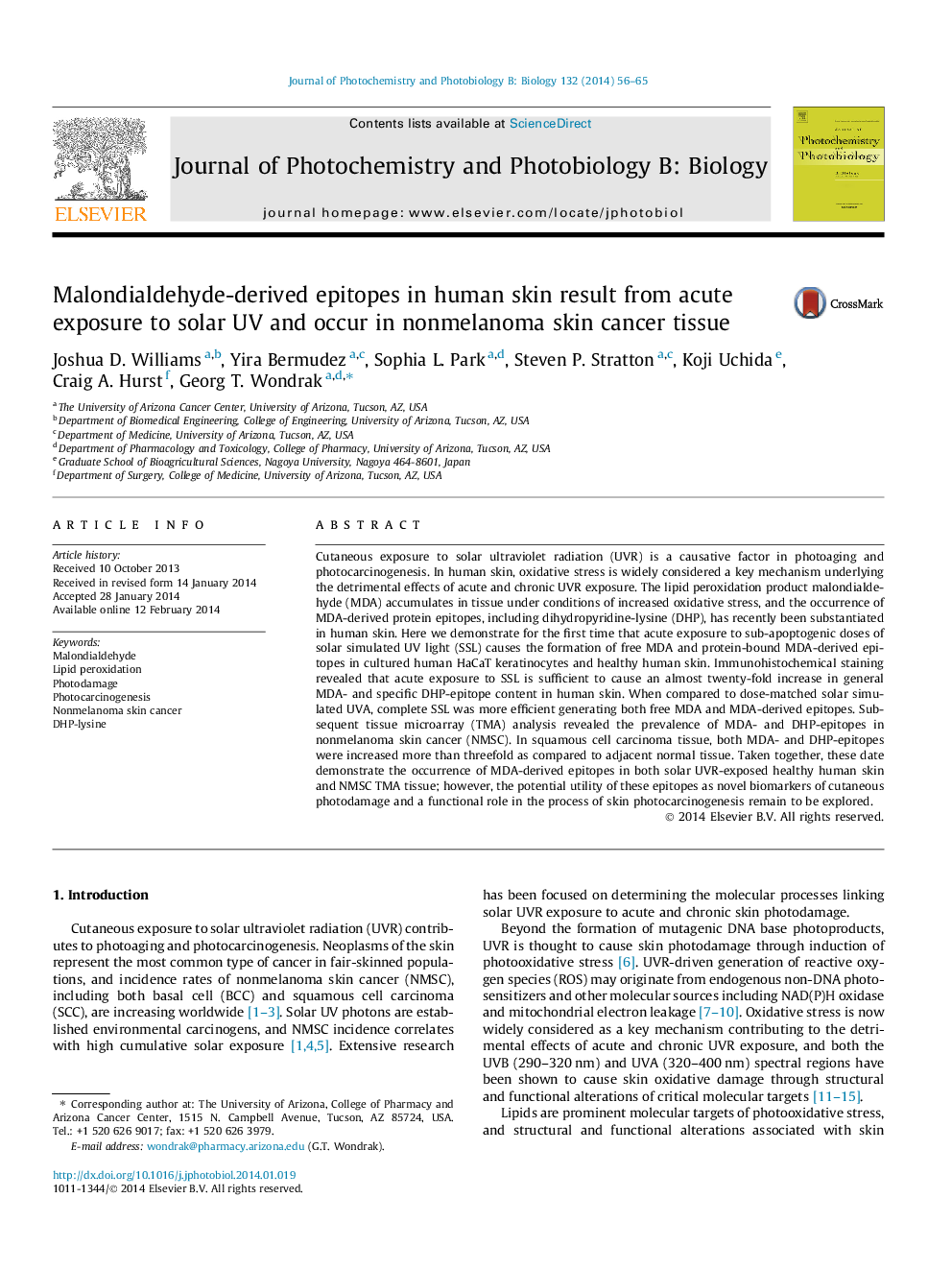| کد مقاله | کد نشریه | سال انتشار | مقاله انگلیسی | نسخه تمام متن |
|---|---|---|---|---|
| 29420 | 44395 | 2014 | 10 صفحه PDF | دانلود رایگان |

• Exposure to acute solar simulated UV drives formation of free MDA in human skin.
• UV exposure generates cutaneous MDA-derived protein epitopes including DHP-lysine.
• MDA- and DHP-epitopes are prevalent in nonmelanoma skin cancer tissue microarrays.
Cutaneous exposure to solar ultraviolet radiation (UVR) is a causative factor in photoaging and photocarcinogenesis. In human skin, oxidative stress is widely considered a key mechanism underlying the detrimental effects of acute and chronic UVR exposure. The lipid peroxidation product malondialdehyde (MDA) accumulates in tissue under conditions of increased oxidative stress, and the occurrence of MDA-derived protein epitopes, including dihydropyridine-lysine (DHP), has recently been substantiated in human skin. Here we demonstrate for the first time that acute exposure to sub-apoptogenic doses of solar simulated UV light (SSL) causes the formation of free MDA and protein-bound MDA-derived epitopes in cultured human HaCaT keratinocytes and healthy human skin. Immunohistochemical staining revealed that acute exposure to SSL is sufficient to cause an almost twenty-fold increase in general MDA- and specific DHP-epitope content in human skin. When compared to dose-matched solar simulated UVA, complete SSL was more efficient generating both free MDA and MDA-derived epitopes. Subsequent tissue microarray (TMA) analysis revealed the prevalence of MDA- and DHP-epitopes in nonmelanoma skin cancer (NMSC). In squamous cell carcinoma tissue, both MDA- and DHP-epitopes were increased more than threefold as compared to adjacent normal tissue. Taken together, these date demonstrate the occurrence of MDA-derived epitopes in both solar UVR-exposed healthy human skin and NMSC TMA tissue; however, the potential utility of these epitopes as novel biomarkers of cutaneous photodamage and a functional role in the process of skin photocarcinogenesis remain to be explored.
Figure optionsDownload as PowerPoint slide
Journal: Journal of Photochemistry and Photobiology B: Biology - Volume 132, 5 March 2014, Pages 56–65